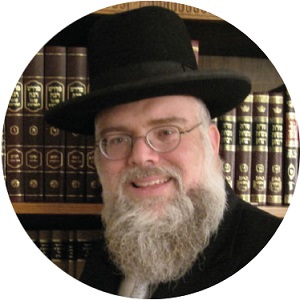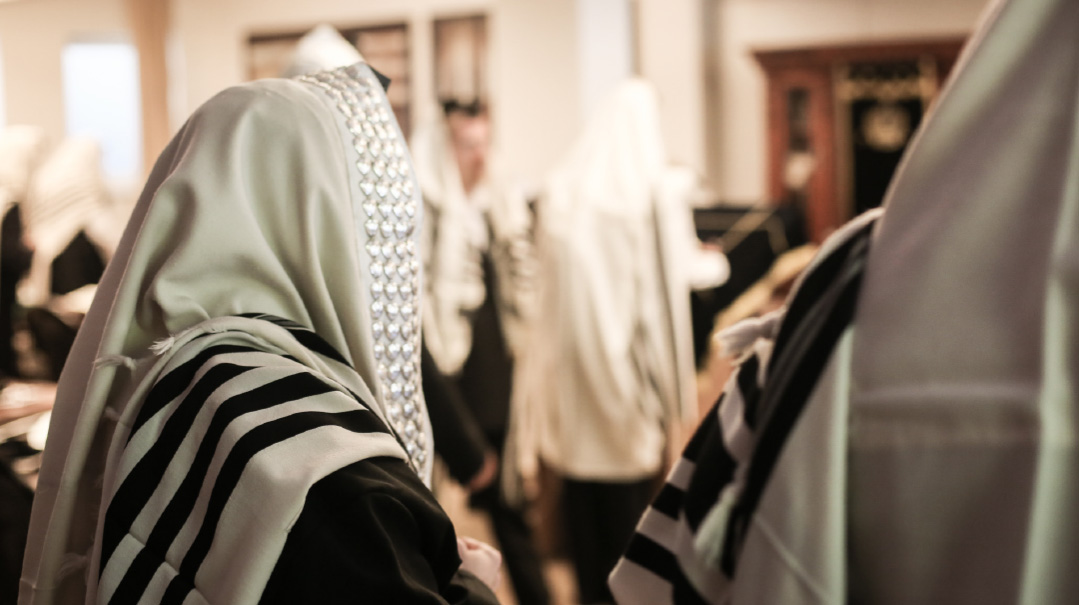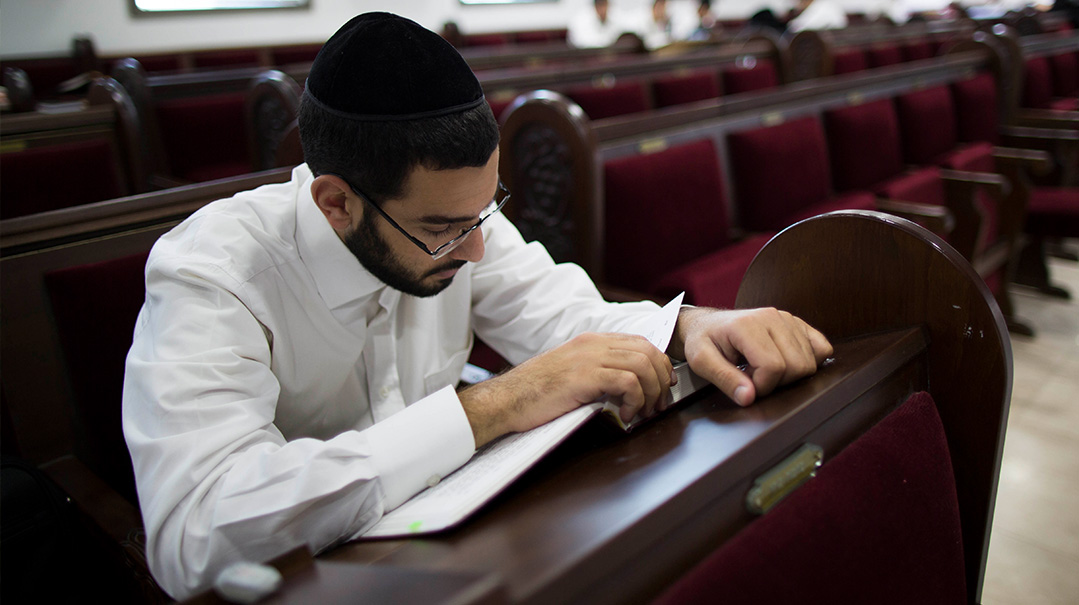Keep the Brotherhood Alive

“Achvah” for other Yidden is our ticket to Olam Haba
Rav Yitzchak Ze’ev Soloveitchik ztz”l, the Brisker Rav, is renowned for the love and empathy he felt for all Jews. An anecdote (recorded in Toras Chaim on Pirkei Avos, page 58) illustrates the incredible achvah, brotherhood, that the Rav felt for Yidden, and how he inspired it in others.
A Brisk resident, the father of a large family, was accused of tax evasion. If convicted, he faced a severe sentence of exile to Siberia, with its freezing cold, life-threatening conditions. The Brisker Rav summoned a prominent lawyer and informed him that he himself was in trouble for this crime. This irreligious lawyer was stunned. Despite his estrangement from his previously observant life, out of respect for the Rav, he offered to intervene at great personal expense and difficulty.
The Rav then informed him that it was not actually he who was in trouble, but rather another Yid in town. The lawyer then rescinded his offer, until the Rav impressed upon him that this Yid’s troubles were his (i.e., the Rav’s), and that saving this Yid’s life was tantamount to saving his own. Incredibly, the lawyer agreed, on the condition that the Rav give him a brachah for success. The Rav gave his blessing, the lawyer succeeded, and the individual was spared.
Aside from demonstrating his own devotion to a fellow Jew, Rav Yitzchak Ze’ev was teaching us that it was not only the Rav who was required to share in another Yid’s pain. With this conviction, he inspired other Jews, of all walks of life, to put their own lives on the line and expend supreme efforts on behalf of their brethren.
Indeed, the Rambam writes in hilchos teshuvah that we all have an obligation to heartily share in each other’s troubles and simchahs. If we do not, then even if we are otherwise 100 percent clean of sin, we cannot enter Olam Haba. Feeling achvah for other Yidden is not just an “extra”; it is the essence of who we are and what we aspire to, and it is our ticket to Olam Haba.
Some recent events — namely, the joy of Reb Sholom Mordechai Rubashkin’s release, and the heartbreaking sorrow of the Azan fire — have provided us with the opportunity to tap into our deeply rooted feelings of brotherhood for our fellow Yidden.
Immediately upon hearing the news of Reb Sholom Mordechai’s release, not only was our community euphoric, but deep, heartfelt feelings of genuine ahavas Yisrael were pouring out of so many Yiddishe hearts in a way that many of us have never experienced before. It made no difference that he adheres to a chassidus that many others do not. He is our brother, and we all felt it.
Now that Rubashkinmania has died down somewhat, and we go back to saying “Acheinu kol beis Yisrael” with one less person in mind, it’s worth taking a step back and looking where we are at, and where we go from here.
Rav Shlomo Brevda ztz”l related something he personally heard from the Chazon Ish that might give us something to reflect on as we go forward. Rav Brevda was once walking in Meah Shearim on a pitch-dark street, barely able to see where he was going, when he suddenly recalled that there was a very steep staircase that must be very close to where he was standing. He immediately caught himself, just as he felt his foot on the precipice of that very staircase. Nothing short of a miracle. He thanked Hashem for his good fortune and continued to his apartment for a night’s sleep, in preparation for his scheduled meeting with the Chazon Ish the next day.
At the beginning of the visit, Rav Brevda told the Chazon Ish about his brush with danger the previous night, and, as the great oved Hashem he was, he expressed a feeling of great disappointment with himself. After having experienced such open Hashgachah pratis, he would have expected his awareness of Hashem to be so great that he would never forget what had happened, and that his temptation to veer from ratzon Hashem would be forever eradicated. Yet, to his surprise, he had awoken today the same person he was yesterday, pre-miracle. How could it be?
The Chazon Ish told him he shouldn’t be surprised, as there is a special yetzer hara for people who have experienced open miracles to forget the inspiration and continue living their lives the same way as before. (One can conjecture that the reason is to preserve our bechirah. Otherwise, we might never sin again.)
We have to work on not allowing the yetzer hara to make us forget the inspiration of brotherhood that we’ve just experienced. Gedolei Yisrael model this for us. The biography of Rav Chaim Shmuelevitz ztz”l, entitled Mo’ach V’lev, describes how, when Palestinian terrorists were holding Rav Yitzchok Hutner ztz”l captive along with other Jewish hostages, Rav Chaim traveled around Eretz Yisrael, admonishing the tzibbur not to let up on their tefillos and to pierce the heavens for a yeshuah. In a hesped for a gadol who passed away during that time, he begged the niftar to go to the Kisei Hakavod and advocate for Rav Hutner’s release. Long after the yeshuah came, Rav Hutner related in a shmuess how he had been amazed by Rav Chaim’s extreme joy when they met, nearly two years after he was freed.
We can glean some lessons about how to perpetuate the inspiration of brotherhood from the parshah of Yosef Hatzaddik and his brothers, which is exactly what Klal Yisrael was reading that joyful week of Reb Sholom Mordechai’s release. When Yosef and Binyamin embraced, the pasuk describes, they cried on each other’s necks. Chazal tell us that their cries were not of unbridled joy over their reunion, but rather over the destruction of the Batei Hamikdash and Mishkan Shiloh that would eventually be erected in their descendants’ sections of Eretz Yisrael.
This interpretation begs an explanation. Would it be so terrible if they indeed shared tears of joy? Why would they utilize these precious moments to mourn, rather than savor the ecstasy of the moment to rejoice? Perhaps the lesson here is that instead of expending the inspiration of the moment on selfish joy, Yosef and Binyamin wanted to ensure, to the greatest extent possible, that a breach in brotherhood like the one that led to mechiras Yosef would never happen again. The second Beis Hamikdash was destroyed because of sinas chinam, and the Gemara tells us that even the period of Bayis Rishon had its fair share of sinas chinam as well. Perhaps, they felt, by infusing the DNA of their future generations with the inspiration of the moment and the profound feelings of brotherhood that their tears represented, the potential for churban, Rachmana litzlan, over lack of achvah could somehow be uprooted, or at least diminished. As we know, it wasn’t enough. But they refused to just allow the feeling to come and go. They had to try and foster them, and do something concrete with them.
This actually reflects the advice of the Ramban, in his commentary on the pasuk, “Im ta’iru im te’oreru… ad shetechpatz.” The Ramban interprets those words homiletically to explain that when a person has an inspiration, he should not it let it slip away, but should channel it into a tangible cheifetz, or item. This is the key to maintaining and eternalizing inspiration.
How valuable would it be if we took the surge of achvah from the joyous event of Reb Sholom Mordechai’s release, coming on the heels of our achvah as we joined in the sorrow of the devastating Azan tragedy, and channeled those feelings into a cheifetz? Would someone consider adopting a needy neighbor who may be elderly or infirm and giving them brotherly attention? Or perhaps redoubling efforts on behalf of a family that is agonizing over their child’s protracted search for a shidduch? Or how about a student who doesn’t have a father to learn with? Can we make an effort to give him quality time as we would hope to give our own children?
On the pasuk “kiyemu v’kiblu,” the Gemara tells us that Klal Yisrael reaccepted the Torah after the Purim miracle. How and where did that take place? Did they all gather in Shushan Stadium and declare “naaseh v’nishma” again?
Perhaps this new kabbalas haTorah was their adoption of the new mitzvos hayom of Purim, which we continue to celebrate every year. They didn’t merely talk about the neis Purim. They resolved to do something by establishing krias haMegillah. And contrary to Haman’s indictment that we are “mefuzar u’meforad,” scattered around without unity, we rose to the challenge, as the pasuk says, “Lech kenos es kol haYehudim,” and we adopted the concrete mitzvos of mishloach manos and matanos l’evyonim for all generations. This is true kabbalas haTorah: taking the inspiration and eternalizing it with a concrete resolution.
One of the hazards of public life is, quite frankly, public life. I have had my share of misunderstandings and disagreements with parents, mispallelim, and various others, which were quite difficult to smooth over until Purim. One mishloach manos (and this one should be brought in person, without a shaliach) can erase so much ill will like nothing else. It is an opportunity not to be missed.
I have often encouraged my kehillah to make a point of davka sending a mishloach manos to someone with whom you do not have the best of relationships, someone who least expects it from you. What better opportunity to strengthen the bonds of achvah than by sending a friendly package on a day when we celebrate our eternal commitment to make others feel as if they are truly our friends, even when that friendship may have suffered some bumps and bruises.
Even beyond Purim, Rashi tells us that the “marbim b’simchah” of Adar continues all the way through Pesach. Opportunities abound; we need only keep our eyes open. Achvah is in our reach. Let’s eternalize it now and forever. We did it then, we can do it now.
Originally featured in Mishpacha, Issue 700. Rabbi Henoch Plotnik is the mara d’asra of Congregation Bais Tefila and a ram in Yeshivas Meor HaTorah in Chicago
Oops! We could not locate your form.







